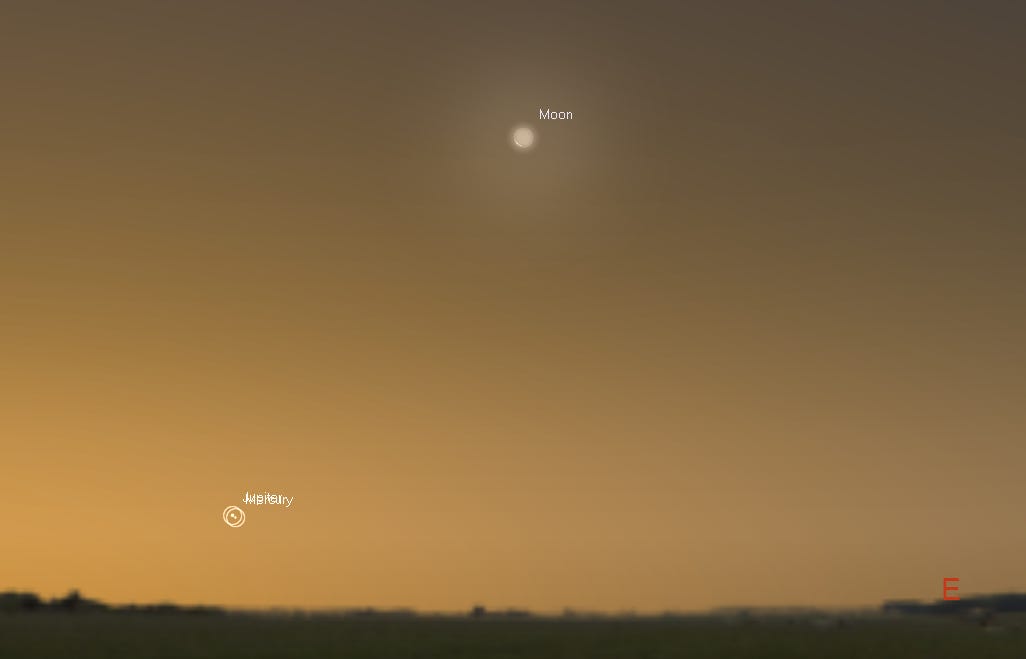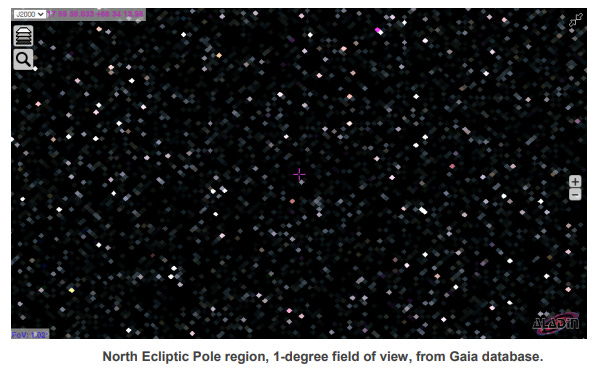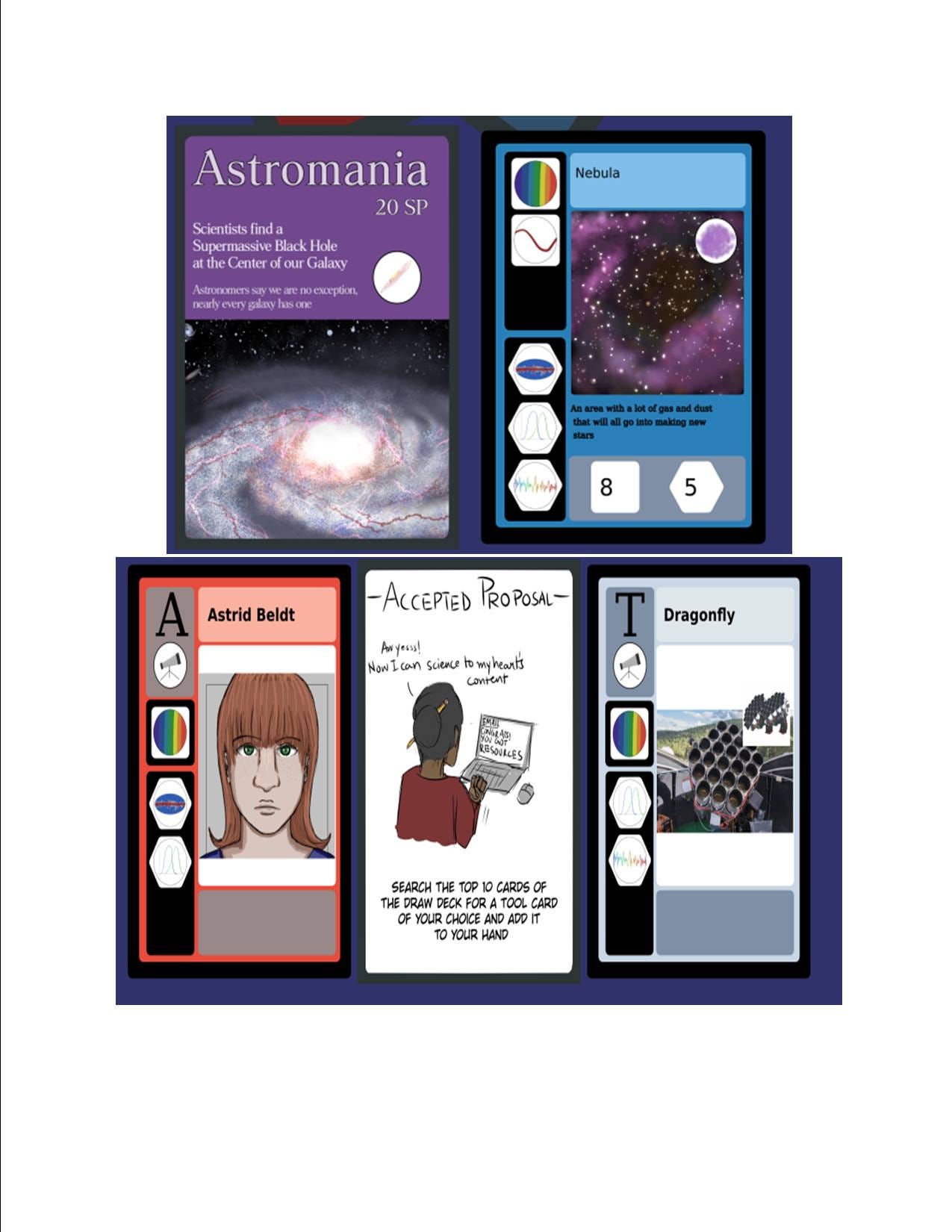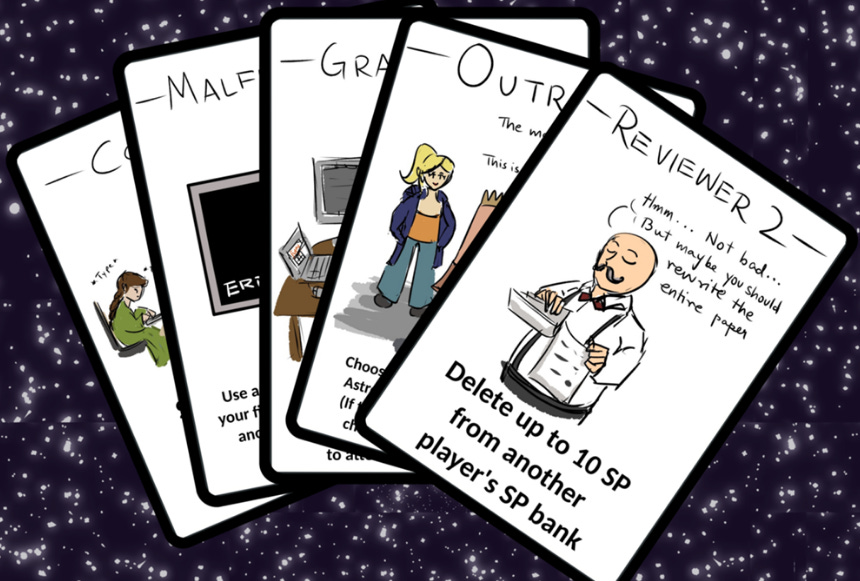The Latest TGT post you missed--#24J - Two Planets Super Close - A Deep Look at the NEP - Astronomy Games
TGT 6/1/24: Mercury and Jupiter REALLY Close; Games (Budding) Astronomers Play; The North Ecliptic Pole Region, Near and Far; What Planetary Parade?
Cover Photo - Peering Into The Dragon
Hello, TCA Subscribers. Here is a sample—and the only posting on TCA I plan to make—the complete Issue 24J of June 1st of The Galactic Times. You can freely sign up down below for the Free Issues or hit the Subscribe Button for ** 45% off ** of a Paid or Educator subscription which is more highly educational in content. Enjoy, and SIGN UP WITH TGT!! [And do so by June 15th when the discount ends….]
In This Issue:
Cover Photo — Peering Into The Dragon
Welcome to Issue 24J!
Sky Planning Calendar —
* Moon-Gazing - Moon Size, Path, Appearance Challenges
* Observing—Plan-et -
- What Planetary Parade?
- Jupiter and Mercury Pass in Opposite Directions—-REALLY CLOSELY
* Border Crossings - The Sun is Bullish—Not the Fortune TellersThis Just In
* Peering Into the Dragon—What’s in View at the North Ecliptic Pole, Close and Far?
Subscription Note
For Paid Subscribers Only—-Towards Cosmic Awareness - Career and Content Astronomy Games
Welcome to The Galactic Times Newsletter-Inbox Magazine #24J!
School should be out for most educational professional readers, but you might be looking for some games to play over the summer, or next school year. You’ll find some astronomy-related games in the Towards Cosmic Awareness column.
In the This Just In news column, I toyed with the idea of calling the article title A Draconian View. A very recent article discussed the peering for several years with space telescopes at a tiny patch of sky at the North Ecliptic Pole (NEP), which lies in the constellation of Draco. Using Hubble and the James Webb, a large group of researchers peered there and found interesting objects that varied in brightness. A year and a half ago I did a ‘peering’ at the NEP using Gaia to get a look at what we’d see in that same line of sight, deriving an analysis of the stars in the Milky Way and what interesting non-stellar objects we see in that line. It seemed a natural thing to compare the two views.
The sky is still mostly dawn views but Saturn is teetering on the edge of being an evening star. The best dawn view will be on the 4th when Jupiter and Mercury present a lesson in how much one magnitude in brightness difference can make, as they get very close in the sky, less than a quarter-lunar-diameter apart in the dawn…as Jupiter rises into the twilight but Mercury is dropping down into the solar glare.
Observe the Moon to see how its sizes change over two weeks, and how it rides high above and north of the Ecliptic.
Enjoy!
Publisher — Dr. Larry Krumenaker Email: newsletter@thegalactictimes.com
Sky Planning Calendar
Moon-Gazing
Moon passages by a star, planet or deep sky object are a good way to find a planet or other object if you’ve never located it before.
June 2 Perigee, Mars 2-degrees south of the largest possible waning crescent (but this conjunction is visible primarily for Eastern Hemisphereans).
Also, the Moon crosses the ecliptic heading above it, where it will be for the duration of this issue. On the 8th it is 28-degrees above both the celestial and terrestrial equators (our Earth’s axis tilt plus the Moon’s own orbital tilt compared to our planet’s orbital plane) so when you see it in the very early evening twilight—before it sets—in Gemini, measure 5-degrees (roughly three fingers at arms length width below and left to ‘find’ the ecliptic.
June 5 In this dawn you’ll see the Moon 0.4-degrees below the star cluster, the Pleiades. A few hours later, the planet Jupiter will be 5-degrees below the Moon.
June 6 New Moon. Nothing to see here folks…. but if you look very carefully, with binoculars, yesterday morning and this evening, you can see the slimmest of morning AND crescent Moons, on consecutive days, an incredibly challenging feat, and rather rare.
June 8 See note above about the Moon’s highest ecliptic latitude appearance.
June 13/14 Around the midnight between these two, the Moon will be exactly at First Quarter. Given that New Moon was on the 6th, that means the past week was actually 7.5 days long. On the 14th the Moon is at its farthest point of its orbit, its Apogee, appearing the smallest possible First Quarter Moon (give or take for the nearly 9 hours worth of travel time between Apogee and exact 90-degrees angle from the Sun).
Observing---Plan-et
==Sun Approaches Solstice, Mercury and Jupiter get REALLY Cozy==
There is No Planetary Parade
Some media, notably CNN, is touting a ‘Planetary Parade” this first weekend of June or so. After getting some way into the articles you learn that they are talking about the dawn appearances of Saturn, Mars, and Jupiter—west to east—and, oh yeah, if you have binoculars you can add Mercury, Uranus and Neptune. Like the SuperMoons, not only do such planetary ‘line ups" happen fairly frequently and with no particular importance, the phrase “planetary parade” USUALLY is meant for when ALL the visible to the naked eye planets are in some lineup visible in the sky and one time. Note: Venus wasn’t mentioned. Mercury is only barely visible and, frankly, as you will read below, mainly because Jupiter acts as a guide to it. Uranus and Neptune are almost always excluded from these Parades unless they occur also during a Parade of the five others. Some of you might remember the Big Parade (or Line Up) of 2022-23 when the planets not only lined up but were in order of solar orbits. Clearly this upcoming parade is not so ordered or complete.
One might say that anything that gets people up to see the sky is a good time, but doing so because simply three bright planets are visible and making it sound “important” is in this writer’s opinion, disingenuous.
The Sun approaches its summer (Northern Hemisphere, winter in the Southern) solstice. Because of orbital and revolution dynamics, that solstice date (in the next TGT issue time frame) this year coincides with the longest (N.H.) day but NOT the dates of earliest sunrises or latest sunsets, or twilight starting or endings! On the 13th we have THE EARLIEST Sunrise. The other earliest(s) and all the latest(s) are after the 15th.
Mercury is low in the Northern Hemisphere dawns, and after the 4th’s dawn, all but impossible to find, rising 45 minutes before Sunrise today but rapidly falling into the morning glow, in solar conjunction on the 14th.
But Mercury and Jupiter have an otherwise spectacular conjunction on June 4th, meeting only 7-minutes of arc—about 0.1-degree—apart. Most humans with good eyesight should see this close pairing in a very clear, low sky between 30 and 45 minutes before Sunrise on this day. Jupiter is a brilliant magnitude -2.0, and Mercury is just one magnitude fainter (if you can call magnitude -1.0 faint!). A rare chance to see how much in brightness a one-magnitude difference can make.

Venus. Nope. Finally this planet goes from hiding in twilight glow to being literally behind the Sun, on the 4th. Finally lazes into the evening sky….in July.
Mars rises before morning twilight, halfway between sunrise and celestial midnight (1 AM).
Jupiter rises before Sunrise about 45 minutes before the Sun gets up on the 4th, a day in which it hangs out with Mercury (see above). By mid-month it is rising just over a full hour before lazy ol’ Sol.
Saturn is getting ready to become an evening planet. At mid-month it rises exactly between sunrise and sunset times, essentially at quadrature or a 90-degree angle from the Sun (from morning or evening Sun, it doesn’t matter which). That translates to about 1 AM Daylight Savings Time.
Border Crossings
Such a disappointment. Last issue astronomers and astrologers agreed the Sun was in the same constellation for four whole days. This issue—not a single day. The Sun is astronomically in Taurus the Bull. Astrologically, in Gemini the Twins. Hope your fortunes are feeling bullish….
This Just In
Peering Into The Dragon—What’s in View at the North Ecliptic Pole, Close and Far?
Published in the 2024 May 9th The Astrophysical Journal Supplement Series, Volume 272, Number 1, an article entitled TREASUREHUNT: Transients and Variability Discovered with HST in the JWST North Ecliptic Pole Time-domain Field by Rosalia O'Brien et al (DOI 10.3847/1538-4365/ad3948 ) takes a look at a tiny piece of sky at the North Ecliptic Pole (NEP) in the constellation of Draco (our Cover Photo shows the location), that point directly above the Earth’s orbit’s Pole (with the orbit acting as a kind of Equator). The roughly 18 arc-minutes patches of sky, overall making an 88-arc-minutes-sized patchwork box, were viewed over a period of years. They found some interesting things.
For some background, back in December 2022, the then-The Galactic Times InDepth newsletter published an article that used Gaia mission data, for a patch of sky about 10-minutes of arc in diameter, to probe through the Milky Way and see what is in that direction, and beyond the Galaxy, in the view, answering the question “What IS Above Us?”. It is interesting to compare the story and this astronomical research article’s results.
From TGTID:
Even though, because of the Solar System’s orbital plane is considerably tilted compared to the disk of the Milky Way Galaxy, it is only some 23 degrees different from looking at the North Celestial Pole, created by Earth’s rotation. In both areas, above us space appears surprisingly sparse. Gaia gave us a sample…of 697 stars within that circle of 10’ of arc of the North Ecliptic Pole (NEP). The star at the North Ecliptic Pole is “Gaia DR3 1633310130630331648,” a 15.87-magnitude, 5380-degree G star, far out at 1496 parsecs (4877 light years) away. The nearest listed object to the Solar System is a slightly fainter star, though apparently like Polaris, one that varies in brightness. This star is surprisingly cool, only 3555-degrees. This line of sight had more stars than looking in the direction of the North Celestial Pole, near Polaris, but of the 269 measured stars towards the Ecliptic Pole, the majority had temperatures in the 3-5 thousands of degrees range, similar to those in line to the North Celestial Pole. There is actually one star glowing at a hot, blue 10,000-degrees, an A-star like not-too-far-distant-future Pole Star Vega!
Most of the stars in this line of sight are within 500 - 2000 pc, but with stragglers going out twice that far, and one WAY out at 8443 pc, more than 27,000-ly! One might conclude many stars seen here are out of the disk of the Milky Way.
There’s actually a fair amount of non-stellar objects in this direction. Near the edge of the NEP zone is the Cat’s Eye Nebula, a famous and bright planetary nebula (a star’s outer atmosphere blown off as it shrinks to a white dwarf) and a faint, non-NGC galaxy. One thing for sure.. launching a space ship in this direction would get us to some interesting non-stellar objects!
O’Brien’s group found that to a faintness of magnitude≃ 29.5, they had found a lot of non-stellar objects that were variable in brightness. They report their discovery of “12 transients and 190 variable candidates.” The majority of the transients were apparently supernovae, although at least two are likely quasars. For the variable candidates, (they) estimate that ∼80 are false positives. Most variable candidates appear to be active galactic nuclei (AGNs), where we find a very tiny fraction, 0.42%, of the general quite distant z ≲ 6 field galaxy population to vary. Images of the AGN variables are below:
What would be interesting to research, for an astronomer with access to space telescopes, would be are these percentages uniform in all other directions, where there is not enough dust in the way to view beyond the galaxy, including the more obvious place to look, the northern and southern Galactic Poles.
Subscription Note
Reminding my subscribers that yours truly will be attending three conferences that are astronomy education (and astronomy news in part) focused in June and July: the American Astronomical Society, the RAS National Astronomical Meeting, and Communicating Astronomy to the Public. Much of their coverage will get not into Today’s Cosmic Awareness column but into special PAID SUBSCRIBER ONLY editions. If you are an astro educator, this is your time to upgrade!
So….
If you are enjoying this twice-monthly newsletter, please, first, support it by using the link to spread copies to your colleagues and friends and urge them to subscribe (why should you do all the emailing, right? We’re glad to do it!).
Secondly, The Galactic Times Newsletter-Inbox Magazine has no outside advertising or support, and thus is a reader-supported publication. Support us with a small paid subscription (~1+ per issue or $30 per year), with paid subscriber-only benefits, like public astronomy education tips and InDepth articles!
There are three-tiers of subscriptions—Free, Paid, Professional Educator. The annual costs are—$0, $30, $35—the cost of two large pizzas a year. You can also subscribe for $5 a month. Cheaper than a big bag of chips.
Free subscribers get what goes out now—Sky Planning Calendar, Astronomy in Everyday Life, some This Just In news briefs, and other articles you have gotten already, including public outreach-related articles in the new Towards Cosmic Awareness column.
Paid subscribers will start getting extra This Just In news briefs and the longer InDepth articles, longer than the occasional Deeper Looks. You also get access to the newsletters of more than two issues ago!
Professional Educators get everything above including extra posts of astronomy education conferences coming up, Teachniques for school astronomy education professionals, and the RAP Sheet of useful stories from the scholarly press.
If you log in and use the special button RIGHT HERE BELOW, you can take 45% off either annual plan, Paid or Educator!
Thank you all for becoming supportive readers of The Galactic Times !
LK
Towards Cosmic Awareness
Those of us who just LOVE astronomy know that the science of the stars is fun. But teaching to children isn’t always fun, for the teacher or the student. One thing that may help is teaching through games.
Astromania, a game created by three astronomy graduate students, is an strange way to teach astronomical knowledge and, though recommended for ages 12 and up (US Sixth Grade), this seems far more acceptable to students who have begun to think about a career in science, high school or undergraduate level. The main objective is to show what graduate studies in astronomy are about, not subject knowledge though that has a role to play, and deals in a fun way on how to get a Ph.D.
Getting that Ph.D. requires objects to study, tools to do so, and collaboration (or not) with other scientists. The game is played with three decks, the Draw Deck, the Sky Deck and the Prompt Deck.
The Starboard is where all the objects in the Sky (Deck) live. Successfully ‘studying’ an object on the Starboard gives you Science Points (SP). These Science Points are your progress toward solving your assigned prompt from the Prompt Deck. Once you have the required number of points, you can publish a paper. Whoever publishes three papers first, gets a PhD and wins the game!
The Draw deck is further split into Astronomers, Tools, and Interact Cards. Astronomers and Tools help you study objects on the Starboard, which is where most of the game-play lies. Studying an object is a combination of playing an astronomer and a tool card and rolling two dice. Just like real-life astronomy, a successful study relies on not only playing your cards right, but also a fair bit of luck!
That luck is partially enabled (good or bad) with the Prompts Deck (above). These cards represent steps where you can interact with a relevant astronomer, or area of astronomer, or the steps in publishing an article, and as life sometimes happens, sometimes the contact or publication step works, and sometimes it doesn’t.
Where’s astronomy knowledge in all this or do you have to be a gung-ho astronomy student or enthusiast first?
The game creators write Astromania helps you build up your knowledge using pattern matching collecting game bonuses. For instance, you can reduce the minimum number you need to roll by matching icons on the astronomer or tool card you’re using with the same shape/color icon on the object card. In astronomy terms, you have to observe “the object in the ‘wavelength’ that gives you the best visibility of this object and/or you’re using the astronomer who specializes in studying this wavelength! This increases your chances of successfully studying this object and you need a little less luck when trying to get science out of it (i.e. lowering the number of dice rolls required). Matching the right tool with the astronomer who specializes in using it also gives you a dice roll bonus for similar reasons.”
First, the nitty gritty: Game link https://astromania-game.github.io/index.html . Better, and where you can buy the game for about $38, https://www.thegamecrafter.com/games/astromania:-the-astronomy-card-game
Second, two years ago, in The Classroom Astronomer newsletter, TCA reviewed an article on designing games, in Physics Education journal:
A. Cardinot, V. McCauley and J. A. Fairfield. (2022). Designing Physics Board Games: a Practical Guide for Educators, Physics Education 57, 13 pages, May. Open Access. https://doi.org/10.1088/1361-6552/ac4ac4
The article was more on making games and was mostly physics. What it did have were ways to make the game more than educational, but also fun. Games are more desirable if they “incorporate gaming elements, such as competitiveness, challenges, motivation and fantasy into science lessons. Educational games can also employ a narrative thread to get students immersed in the story and learn from it as well as a plethora of mechanics, shapes, elements and sizes,” so say the three Irish authors. To accomplish this, the authors developed six design principles that they feel are essential for creating meaningful and effective educational games to support the classroom instruction of science. And five design steps, with questions to ponder and act on, are Empathise, Define, Ideate, Prototype, Playtest:
Does Astromania fit the proposed designs? It is hard to tell without actually playing it or having a copy. On first glance, this reviewer found it to be a bit confusing, but realistic. It certainly fit was any Ideation I would have if I designed a game after remembering my graduate schools’ days (I’ve had three graduate degrees from three places). They Prototyped it but it appears that their Playtesters were other grad students. It does not appear they actually tested this with school age students.
In addition to a physics and astronomy game the authors of the Physics Education article created, listed in their references (see Cover Photo), they list a number of other science games. For those looking for astronomy games, the authors list three. Quote—
Terraforming Mars is a‘modern board game’ that involves changing Mars environment to make it similar to Earth, i.e. a habitable planet. The process includes changes in the atmosphere, temperature and surface. The game has a hexagon grid game board, and involves several mechanics to engage players in the mission and topic, such as hand management, income (gain resources throughout the game), set collection, tile placement, progressive turn order, and variable player powers. In addition, the game requires players to actively engage in strategic thinking throughout the game-play. Despite the astronomy theme and a large amount of planetary data, the game may not be suitable to align with a regular science lesson given the duration of the game-play (approximately 120 min). However, this is a commercial off-the-shelf game that has several mechanics which have been used in smaller educational games to convey scientific information. Found on Amazon for about $59.
NASA Space Voyagers card game is an educational game with income mechanics in which students earn research points by completing different actions in the game. Although these are not the only mechanics involved in the game, it is a great example of how the mechanics are used to engage players in space manoeuvres and overcome research challenges in outer space. You can find it and other NASA developed games, at…NASA.gov
Planet, a commercial board game, employs tile placement mechanics to form environments on different planets. https://boardgamegeek.com/boardgame/252929/planet









